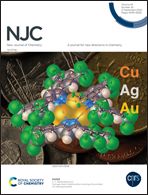A one-step tannic acid coating to improve cell adhesion and proliferation on polydimethylsiloxane
Abstract
Polydimethylsiloxane (PDMS) is one of the most used materials in the fabrication of miniaturized devices for cell-based analysis. Although its optical transparency, chemical and biological inertness, non-toxicity, and permeability to gasses are in favor of on-chip cell culture and manipulation, its intrinsic hydrophobicity is associated with non-specific protein adsorption, protein rearrangement of conformation and denaturation, cell aggregation and detachment. To improve the cell-compatibility of PDMS, a green and straightforward chemical coating was developed by modifying the PDMS surface with tannic acid (TA@PDMS). An increase of surface wettability and XPS-characterized functional groups on the PDMS surface verified the successful TA coating. The TA modification significantly promoted the adhesion and proliferation of human liver cancer cells HepG2 on the PDMS surface. The functionalization also substantially increases the cell viability compared to pristine PDMS. The improved wettability, together with the TA-mediated protein immobilization not only favors cell anchoring and spreading, but also alleviates cell apoptosis during the culture process. The low cost, colorless, green coating conditions, and TA-mediated molecular immobilization capability suggest that TA-coating has promise in fabricating PDMS miniaturized biomedical devices for cell analysis.



 Please wait while we load your content...
Please wait while we load your content...